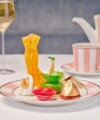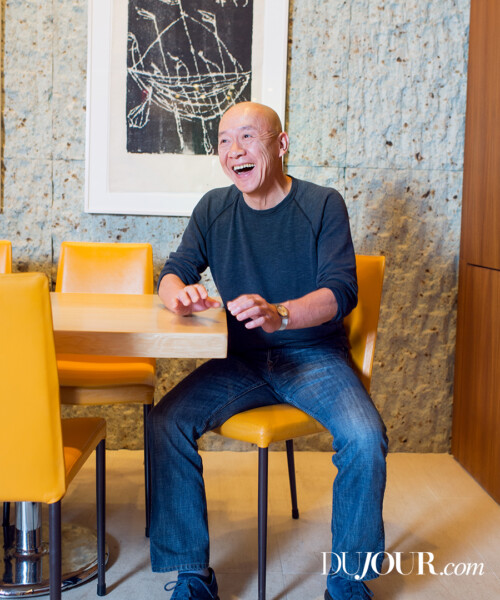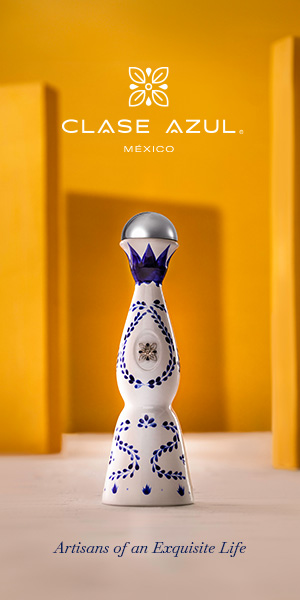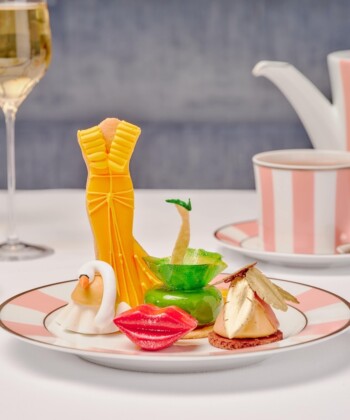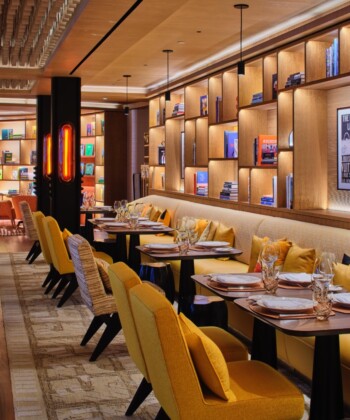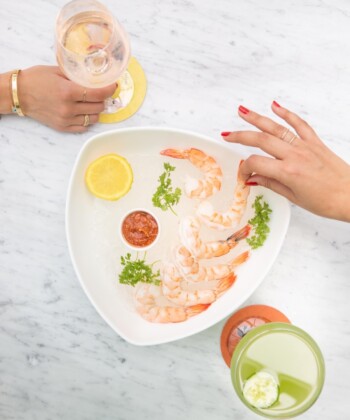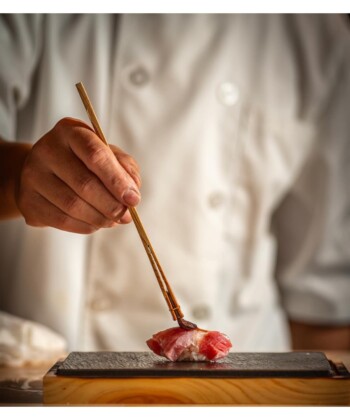You might think that the ingredients-focused fanaticism on offer at the Upper East Side’s Kappo Masa—the clubby, à la carte Japanese restaurant adjacent to co-owner Larry Gagosian’s Madison Avenue gallery—would call for only the simplest of serving slabs with little in the way of design. But chef Masayoshi “Masa” Takayama isn’t only precious about the food he’s serving, he’s also exacting when it comes to the plates on which he’s serving it.
A self-taught potter, Takayama created a suite of handmade tableware to go along with every course he serves. He designs the cast-iron and glass dishes in conjunction with trained artisans, but the ceramic pieces he makes himself, shaping them on a wheel in a pottery studio in Japan and then firing them in a 1,000-degree kiln. Each dish, he says, matches the exquisitely sourced, sinfully expensive sushi—a $240 toro roll with caviar, for example—that’s served on it. “My food has a power. It is vibrant, seasonal, fresh. It doesn’t work well with that antique stuff,” Takayama says, a reference to the little lacquered boxes and daintily painted ceramic bowls used in traditional kaiseki-style Japanese meals.
Takayama, 61, is obsessed with power, specifically that which is inherent in nature. One of his signature bowls, deep and made of a craggy dark clay, was inspired by the rocks on the beaches of Ishikawa Prefecture along the Sea of Japan. “The rock is hit by a very, very strong wave,” he explains. “It leaves this irregular shape. That gives me the idea.”
The bowl is reserved for one dish: katsuo bonito, a type of tuna whose silvery skin and dark red flesh play against the variegated shades of the clay.
Another of Takayama’s culinary innovations, surimi pasta, a type of noodle he makes entirely with fish, has become the favorite gluten-free repast of models like Karlie Kloss and Irina Shayk. The thin strands—flecked with bottarga, cilantro and chili—come to the table atop a heavy disc of bone-white porcelain, nearly five inches tall. The food, in this case, is literally elevated by the dish on which it rests.
But of course, Takayama says, these forms, however pure and inspired, are nothing without their contents. “This is sleeping,” he says, gesturing to an empty clay bowl. “Once the fish and ingredients come, it wakes up.”










